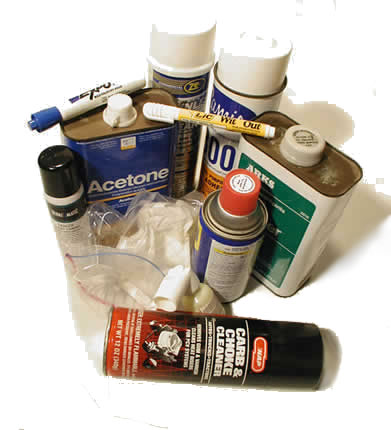- Volatile
solvents - These are found in various fuels and paints.

The glue sniffers of the 1960’s popularized this class of inhalants.
Products abused in this category include gas, "goop" (a product
to resole shoes), lighter fluid, paint, kerosene, gun cleaning solvent,
cleaning fluids, nail polish, nail polish remover, rubber cement, paint
thinner, varnish, spot remover, toxic markers, and propane.
- Aerosols - These
products are readily available in virtually every household. Products
abused in this category include hair spray, spray paints, spray deodorants,
frying pan lubricants, air fresheners, freon, computer "dust-off",
and fabric protectors. Asthma inhalers are also abused. Like other aerosols,
they contain fluorocarbons, which produce euphoric effects. Peers refer
to individuals who choose this product as "spray heads."
- Nitrites
- Inhalant nitrites including amyl nitrite, (street name-poppers and snappers)
was originally prescribed for heart patients. Butyl nitrite (street names-rush,
bolt, locker room, bullet and climax) is sold as room fresheners. Nitrites are
also sold as aphrodisiacs in adult bookstores and through mail order catalogs.
According to NIDA (2005) Nitrites are now prohibited by the Consumer Product
Safety Commission, but can still be found, sold in small bottles, often labeled
as "video head cleaner," "room odorizer," "leather cleaner," or "liquid
aroma."
- Anesthetics
- Products abused in this category include ether, chloroform and nitrous
oxide. Nitrous oxide is commonly called "laughing gas" and
used by dentists. Nitrous oxide is also sold in balloons at rock concerts
and available in small cylinders know as "whippets."
|
